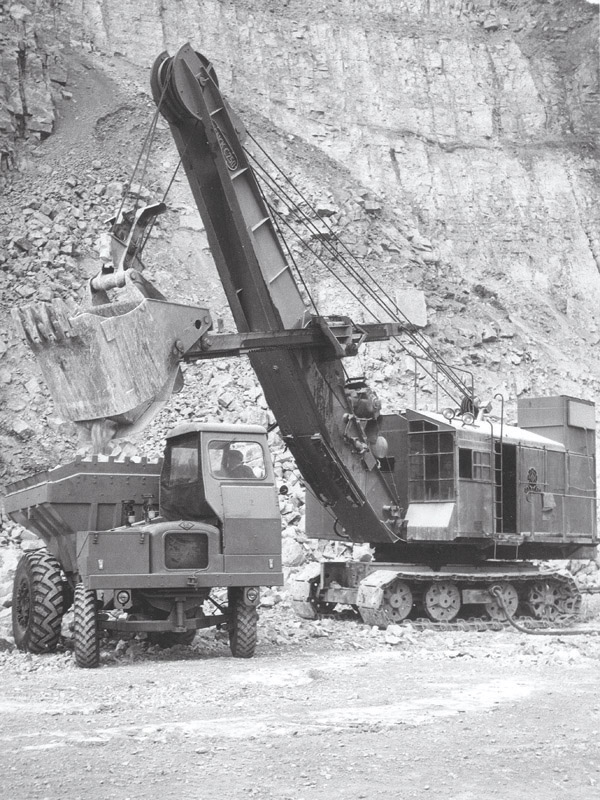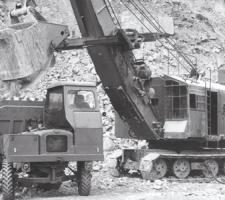
Today the efficiency of hydraulic excavators is taken for granted but before their introduction mechanical shovels provided excavation power. Mike Woof reports
Like the aeroplane, the mechanical excavator was an American invention. It was in 1835 that the need to dig material productively led to a major innovation, the first steam powered shovel, which was designed by William Otis. His design featured an upright boiler and a raised boom slewing system that was driven by chains. The boom assembly was able to pivot on the chassis (which ran on rails) while the bucket was also raised by chains. This was a true mechanical shovel, as the transmission of power to the bucket was by mechanical means.
The machine was actually developed for earthmoving use in railway construction, as Otis was a partner in a contracting firm. However the concept attracted considerable interest and a few of these machines began to be used in other sectors such as quarrying and coal mining too.
As with some other notable inventions (such as the high-pressure steam engine), the tight grip kept by his family on the patents Otis registered just before his death in 1839 hindered further development of the basic design for some 40 years. Combined with the availability of cheap labour, it meant that comparatively few Otis type machines were actually built. It was only when the patents expired in the 1870s that development of the steam shovel was able to continue apace. Historically important firms such as Bucyrus and Marion in the US, Ruston in the UK and Menck in Germany all entered the market before the close of the 19th century.
Early steam shovels were mounted on rails and this limited their mobility and versatility as tracks had to be laid before they could be operated. Some later machines ran on steel wheels but these were restricted in terms of performance and could only be used where ground conditions were good. The development of crawler tracks led to a significant advance as it allowed these mechanical cable shovels to operate without the need for tracks and to work on much softer ground as well.
Cheap labour continued to limit sales of steam-powered cable shovels in earthmoving, quarrying and mining and it was only in the 20th century that the machines became more common. Technological advances also led to the development of more efficient shovels that were electrically powered, as well as machines with internal combustion engines. Bucyrus introduced its 50-B in 1922, which wielded a 1.57m3 bucket and was of note, as though it was initially powered by steam it was later available with a choice of petrol, diesel or electric drive. Rival firm P&H developed its electric 1200WL in 1933 and from that time, concentrated on building electric shovels only.
Because electrically powered cable shovels were durable and reliable, they continued to be used in earthmoving, quarrying and mining applications, long after the development of the first hydraulic excavators in the 1940s. However, as larger, more efficient and reliable hydraulic excavators became available they began to replace the electric cable shovels during the 1960s and 1970s, as the latter machines were generally less versatile (being restricted by their power supplies) as well as being more expensive to build.
Cable shovels still proliferate in the open-pit mining industry though, with Bucyrus International and P&H dominating the international market, although Russian firm Uralmash builds a number of models that are sold mainly in Russia and the CIS nations.
Both Bucyrus and P&H still offer smaller machines but the firms concentrate mainly on building the larger units, their 495 and 4100 models respectively. The various Bucyrus 495 and P&H 4100 models (there are different versions to suit the application) are huge machines that are considerably heavier than the world's largest hydraulic shovel,















